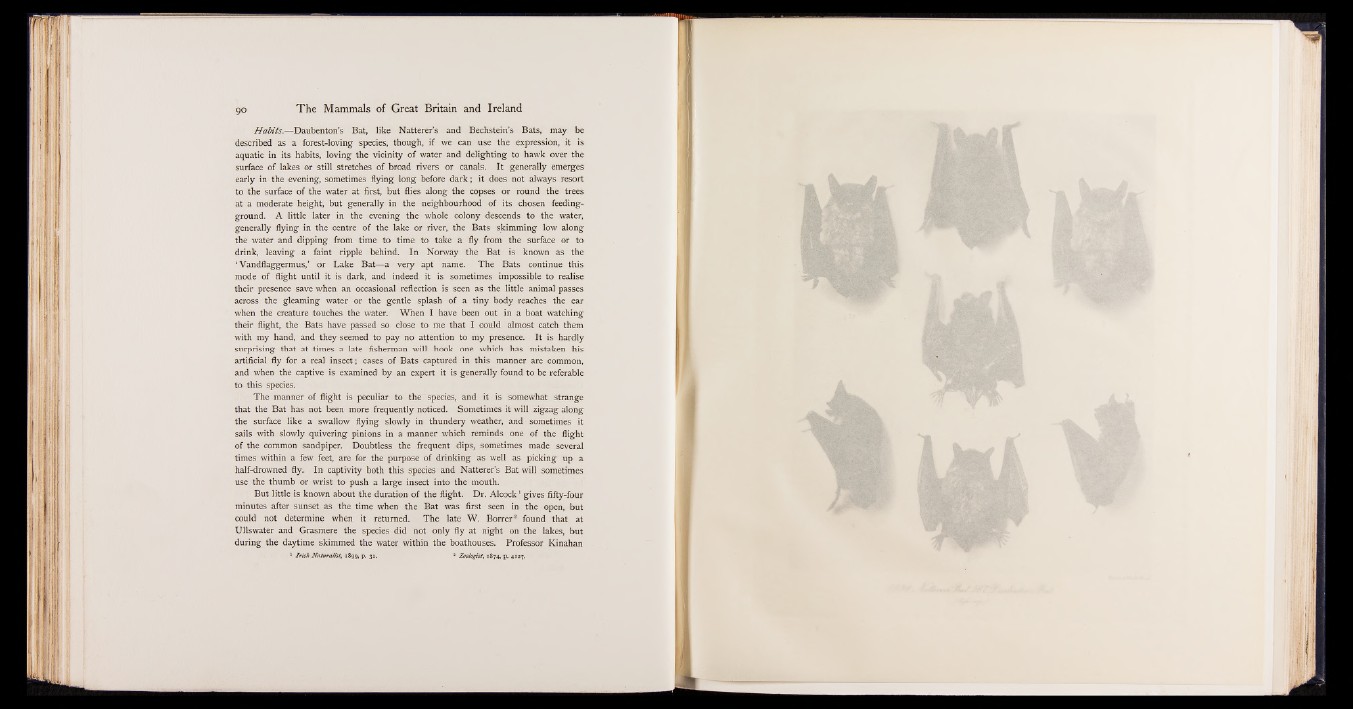
Habits.— Daubenton’s Bat, like Natterer’s and Bechstein’s Bats, may be
described as a forest-loving species, though, if we can use the expression, it is
aquatic in its habits, loving the vicinity of water and delighting to hawk over the
surface of lakes or still stretches of broad rivers or canals. It generally emerges
early in the evening, sometimes flying long before dark; it does not always resort
to the surface of the water at first, but flies along the copses or round the trees
at a moderate height, but generally in the neighbourhood of its chosen feeding-
ground. A little later in the evening the whole colony descends to the water,
generally flying in the centre of the lake or river, the Bats skimming low along
the water and dipping from time to time to take a fly from the surface or to
drink, leaving a faint ripple behind. In Norway the Bat is known as the
‘ Vandflaggermus,’ or Lake Bat— a very apt name. The Bats continue this
mode of flight until it is dark, and indeed it is sometimes impossible to realise
their presence save when an occasional reflection is seen as the little animal passes
across the gleaming water or the gentle splash of a tiny body reaches the ear
when the creature touches the water. When I have been out in a boat watching
their flight, the Bats have passed so close to me that I could almost catch them
with my hand, and they seemed to pay no attention to my presence. It is hardly
surprising that at times a late fisherman will hook one which has mistaken his
artificial fly for a real insect; cases of Bats captured in this manner are common,
and when the captive is examined by an expert it is generally found to be referable
to this species.
The manner of flight is peculiar to the species, and it is somewhat strange
that the Bat has not been more frequently noticed. Sometimes it will zigzag along
the surface like a swallow flying slowly in thundery weather, and sometimes it
sails with slowly quivering pinions in a manner which reminds one of the flight
of the common sandpiper. Doubtless the frequent dips, sometimes made several
times within a few feet, are for the purpose of drinking as well as picking up a
half-drowned fly. In captivity both this species and Natterer’s Bat will sometimes
use the thumb or wrist to push a large insect into the mouth.
But little is known about the duration of the flight. Dr. Alcock1 gives fifty-four
minutes after sunset as the time when the Bat was first seen in the open, but
could not determine when it returned. The late W. Borrer2 found that at
Ullswater and Grasmere the species did not only fly at night on the lakes, but
during the daytime skimmed the water within the boathouses. Professor Kinahan
1 Irish Naturalist, 1899, p. 31. a Zoologist, 1874, p. 4x27.